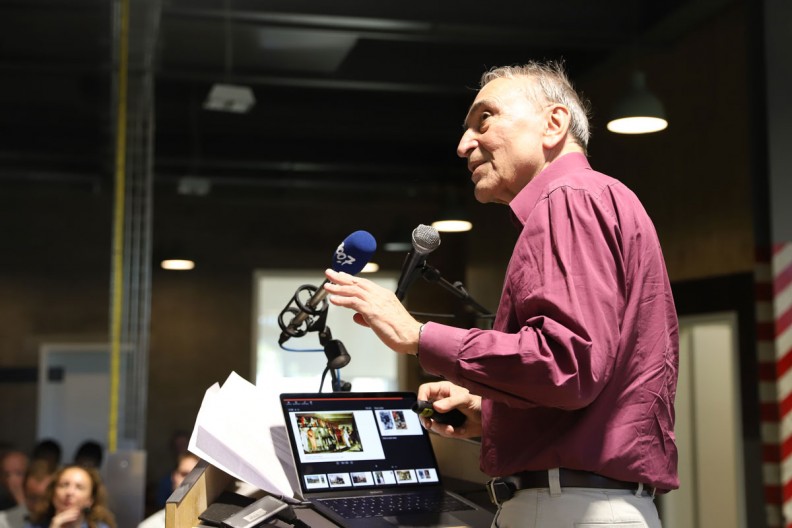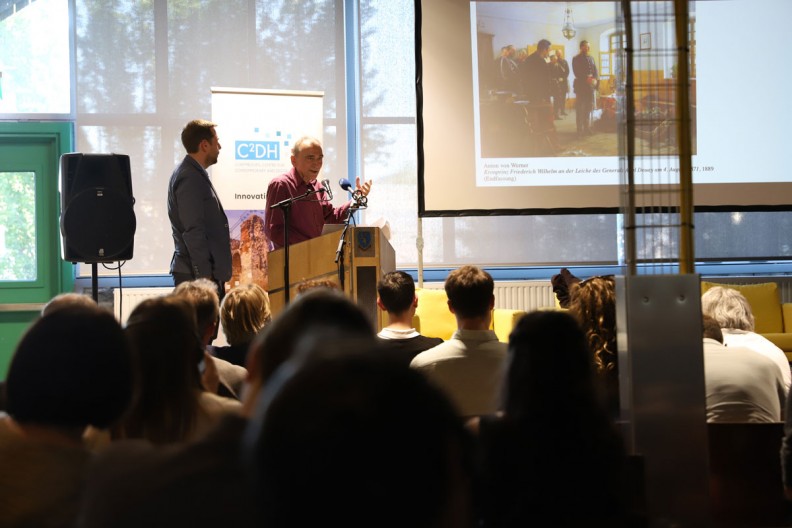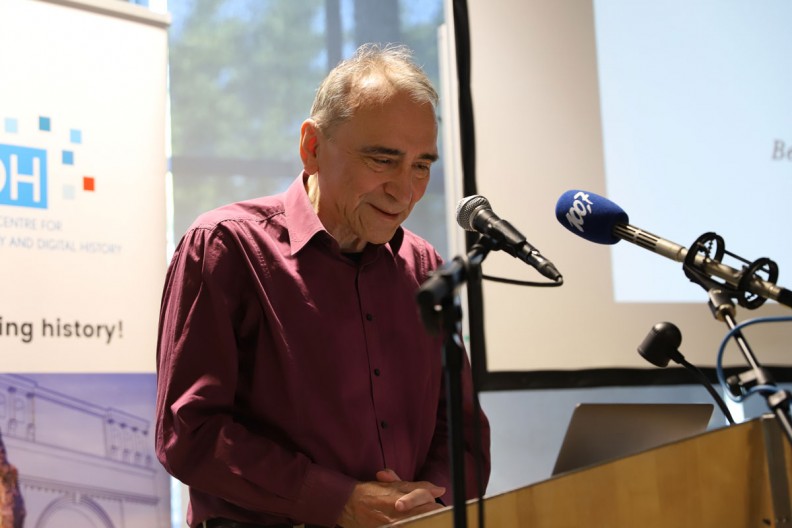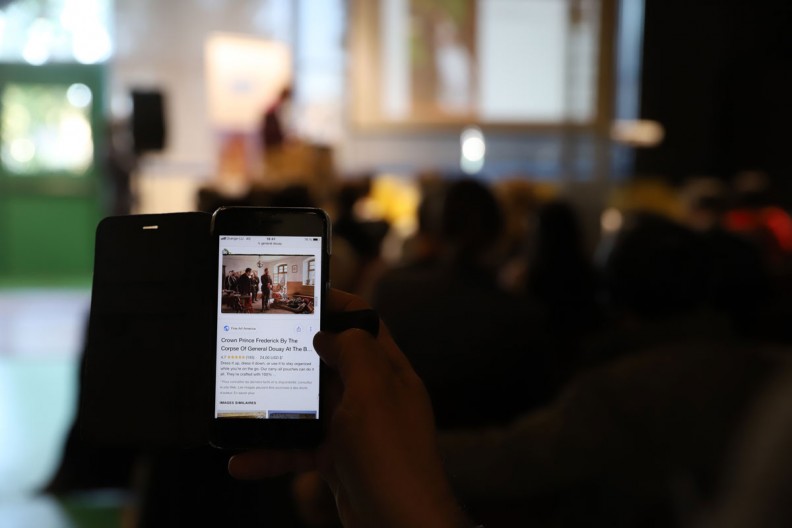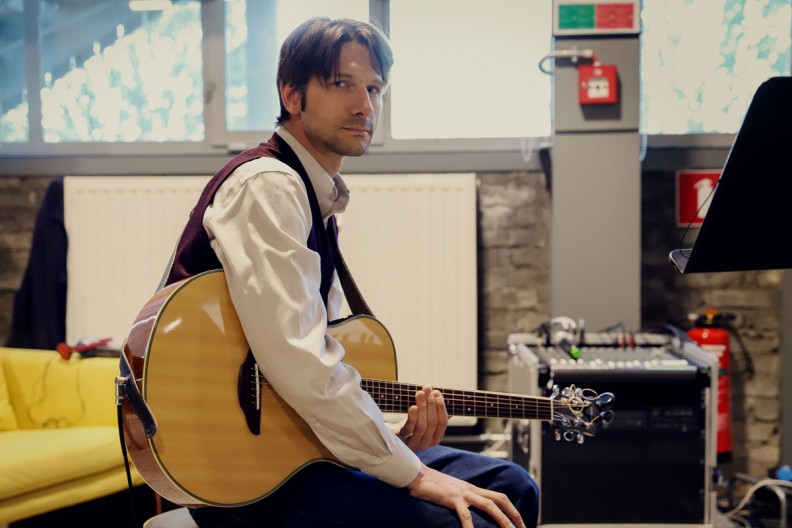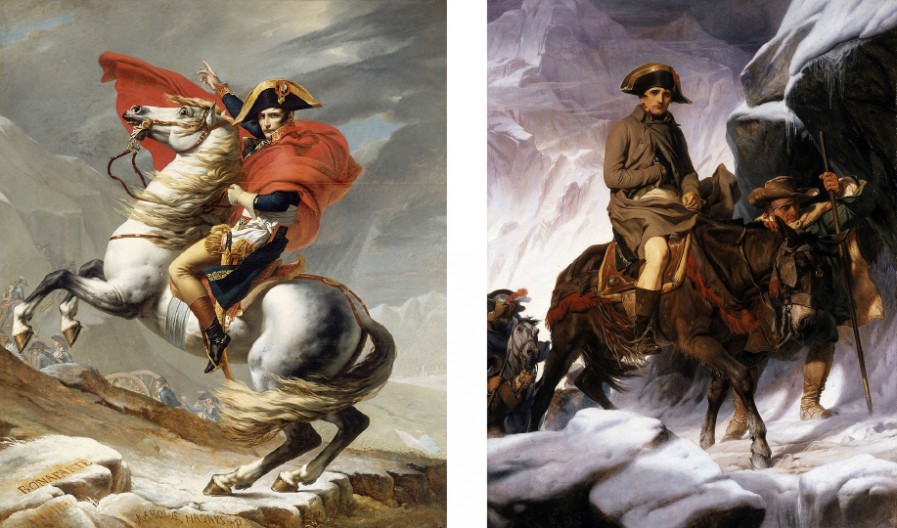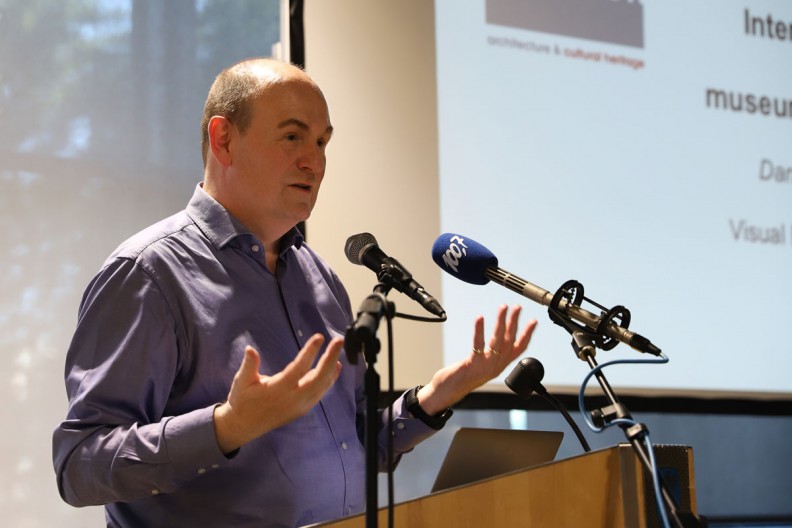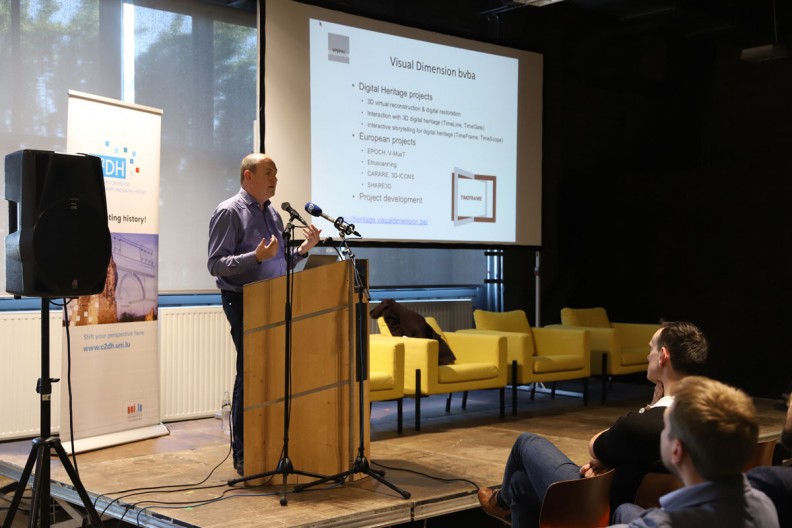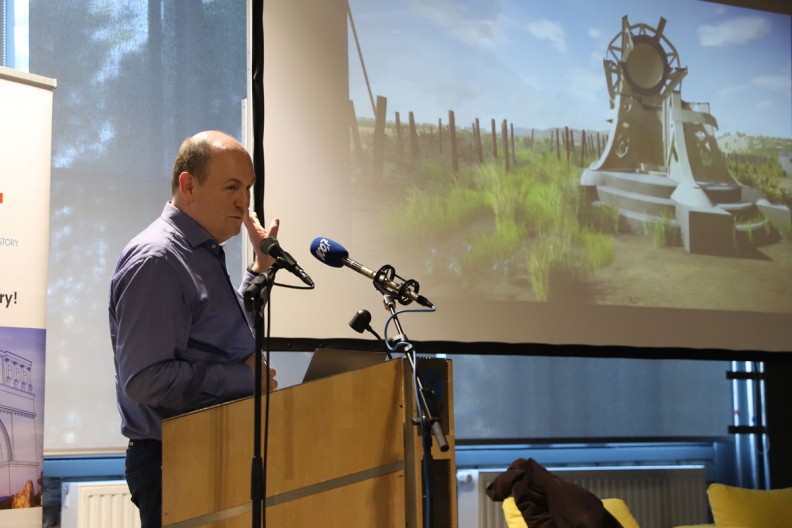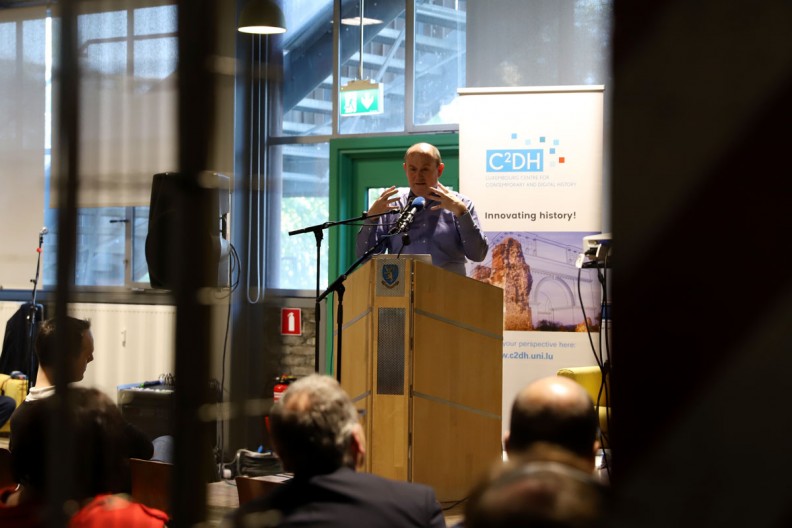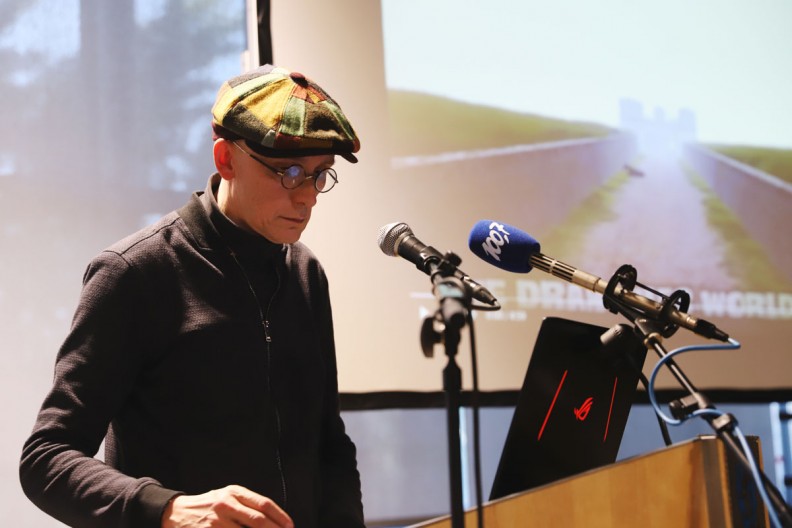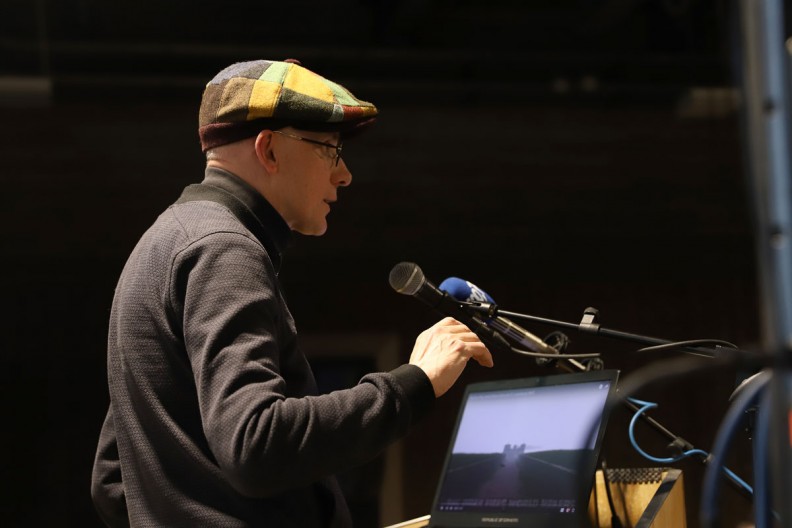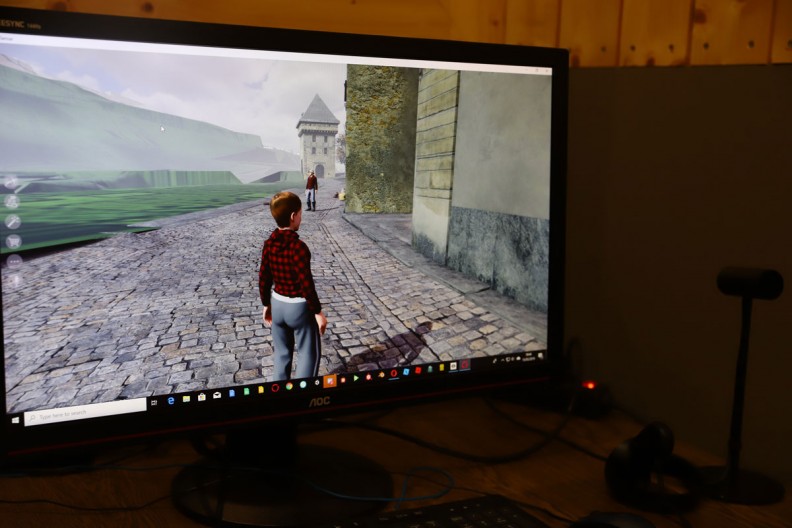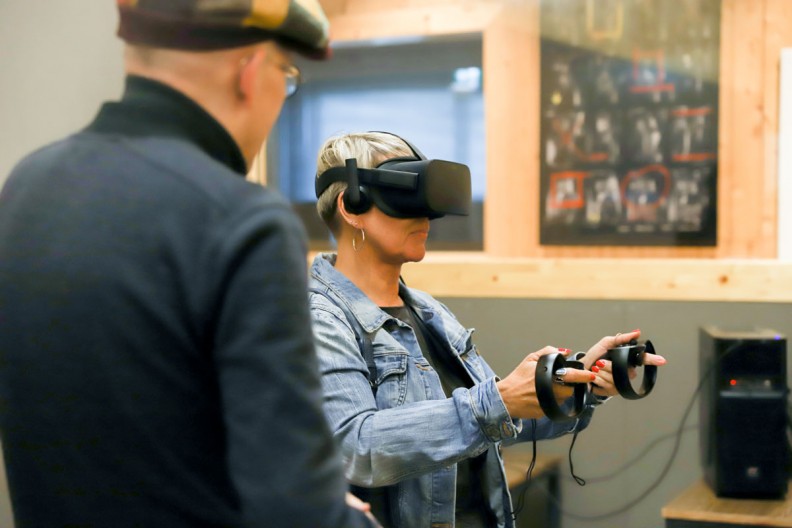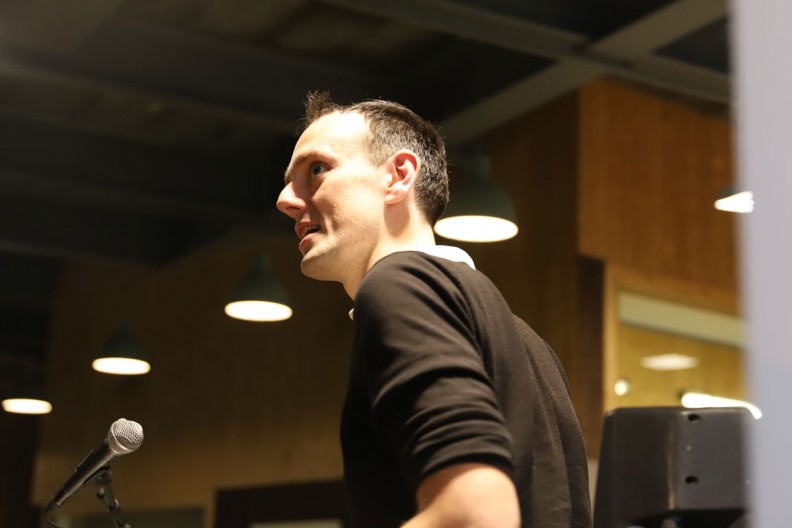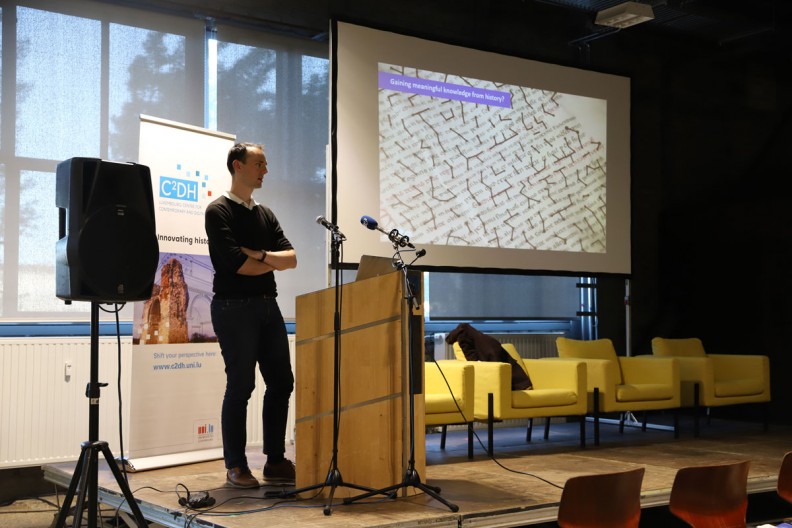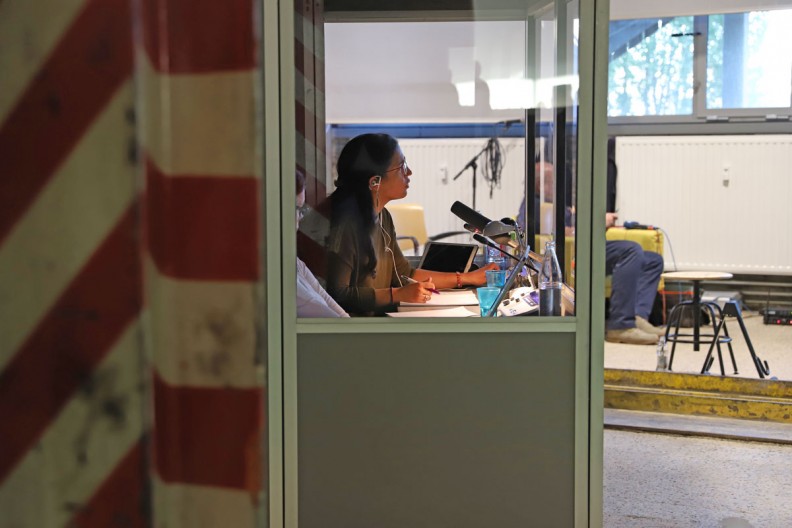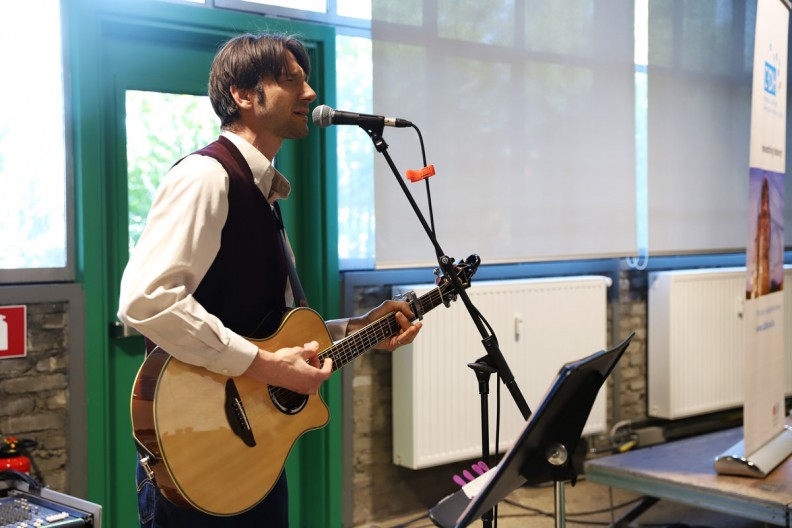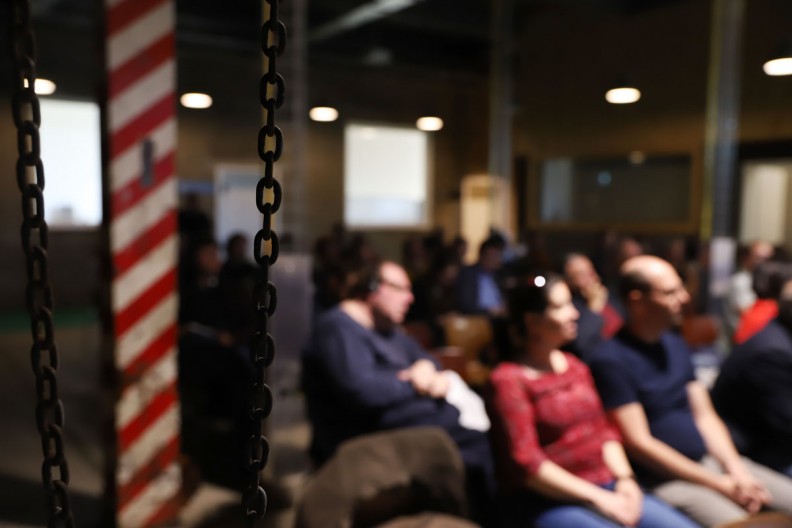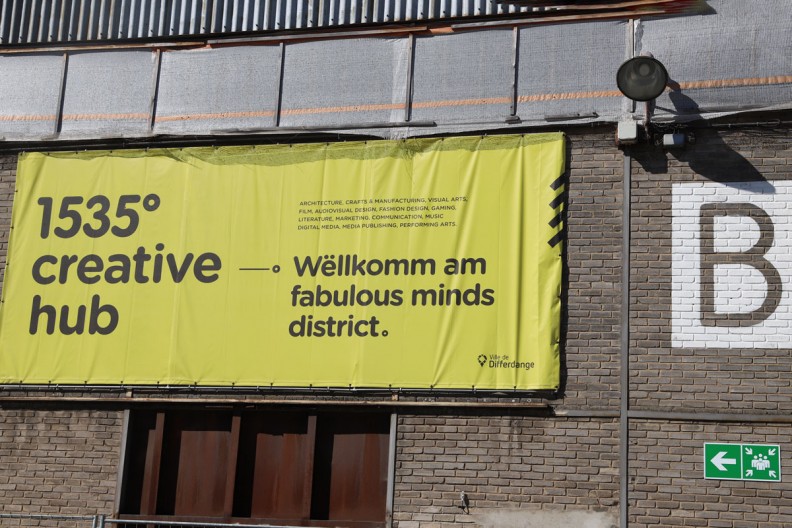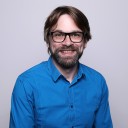Matthias Eberle, professor emeritus of the Weißensee Academy of Art Berlin, set the stage for this Forum Z by contextualizing the idea of visualising history from an art history perspective with a presentation titled “Wer erfindet das bessere Bild? Beispiele zur Bildfindung der Historienmalerei”. Well before the advent of digital technology, humanity used visual media to shape and define the representation of the past. As Eberle pointed out, a painted representation of an historical event has to be read both in the contemporary political context and art practices. Most of these paintings were conducted and commissioned with the goal to convey a certain perspective, but the grammar to express this perspective was one of art history. Symbolic elements hinting to the perspective can be explicit or more suggestive. The mutual inspiration between painters serves also to underline the contrast between two political situations. As the historical and political context changed, so did the representation of the past, leading to very different representations of the same scene.
Daniël Pletinckx, director of Visual Dimension showcased in his talk “A virtual guided tour through a WW1 site” the virtual reconstruction of a costal defense system build by the German occupation force on the Belgium coast during the first World War. In contrast to other virtual and AR experiences that focus on individual users, Pletinckx and his company are in particular interested in developing systems that support local guides that lead groups through the site. In his presentation, Pletinckx underlined the rich information hunt that his team had to conduct in order to reconstruct the scenes shown in the virtual tour.
Pit Vinandy, producer, CEO of transmedia and musician presented his project Pfaffenthal 1867 in collaboration with the Luxembourg City Museum which is dedicated to the reconstruction of historical Luxembourg in virtual reality applications. From Second Life he recently switched to Sansar, a new virtual reality platform where a new version of historical Luxembourg is being created. Like Daniël, Pit strives for historically accurate renditions of past Luxembourg but also stressed the potential of virtual reality to become a place for social exchange and performances.
Sander Münster presented the work of the Time Machine consortium, a computer-science-led effort to mass digitize European cultural heritage and to represent and study the past with the help of computational tools such as simulations, visualizations and 3D-reconstructions. Sander continued to present HistStadt4D, a collaborative project which integrates historical drawings, paintings and photos in a three dimensional map of historical Dresden. With time being the fourth dimension, the map contains depictions of Dresden from as early as 1679 until the present.
Where to go from here?
There are of course many more perspectives, attitudes and approaches to the visualization of history but there is only so much we can cover in a two-hour event. Thankfully the Internet allows us link to some of the amazing work that is going on out there.
Sarah Kenderdine’s work as a professor at the EPFL in Lausanne, founder of the laboratory for experimental museology (eM+) and director of the ArtLab at the EPFL operates at the forefront of interactive and immersive experiences for galleries, libraries, archives and museums. Her research not only combines cutting edge technology with media art, but visualizes as well forms of heritage and history that are often neglected from a European point of view. You can find an overview of Sarah’s work on her homepage.
Julia Noordegraaf is professor of Digital Heritage in the department of Media Studies at the University of Amsterdam. Besides her role as director of the Amsterdam Centre for Cultural Heritage and Identity (ACHI) and her different research activities in digital humanities, Julia coordinates together with Claartje Rasterhoff the Amsterdam Time Machine, an exciting example for combining many different ways of visualising the past through federating multiple local initiatives. We will have the pleasure of welcoming Julia Noordegraaf for a lecture on audiovisual heritage later this year.
Manon Brill is a historian who chose a unique approach for visualising the past by creating the Youtube channel “C'est une autre histoire”. Her choice of topics and the visual style of her videos go way beyond the classical history book and attract viewer numbers that many history books (and websites) can only dream about.
Dorothee Pitz is an editor at the German public TV station WDR where she designs and develops new forms of storytelling that apply virtual and augmented reality. The app “WDR AR 1933-45” is aimed at schoolchildren and allows them to see interviews with eye-witnesses who were children at the time of the events. All interviews are displayed in a very unique augmented reality perspective that puts the eye witnesses in front of the viewer through their smartphone and tries to visualize their reports on holocaust, persecution and the horrors of war.
Finally C²DHs very own Marleen De Kramer works in her PhD thesis extensively on the visualisation of historic buildings and the challenges posed by the communication of different theories about their past states to the public. Marleen has shown her exciting work in previous Forum Z events and is due to the quality and accessibility of her work a regular presenter at different University and C²DH events.
Despite this additional list of references, the domain of visualising history is even broader and contains many more voices that should be heard. We are curious about your interests: would you like to attend another Forum Z on the visualization of history or do you have other ideas for interesting topics? Just drop us a note to c2dh@uni.lu or message us on Twitter, we are happy to hear from you!



